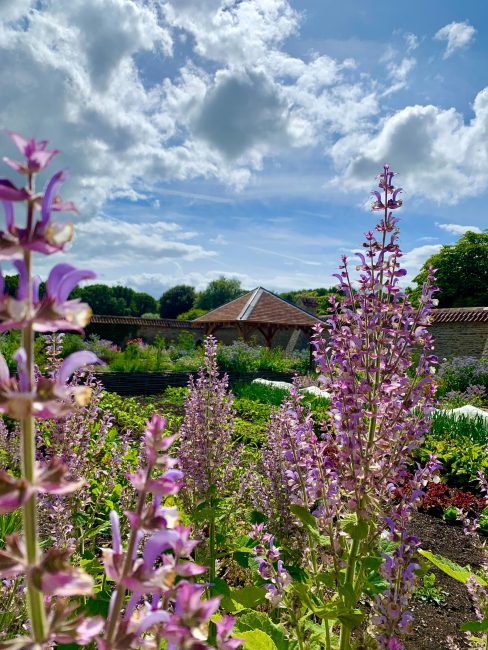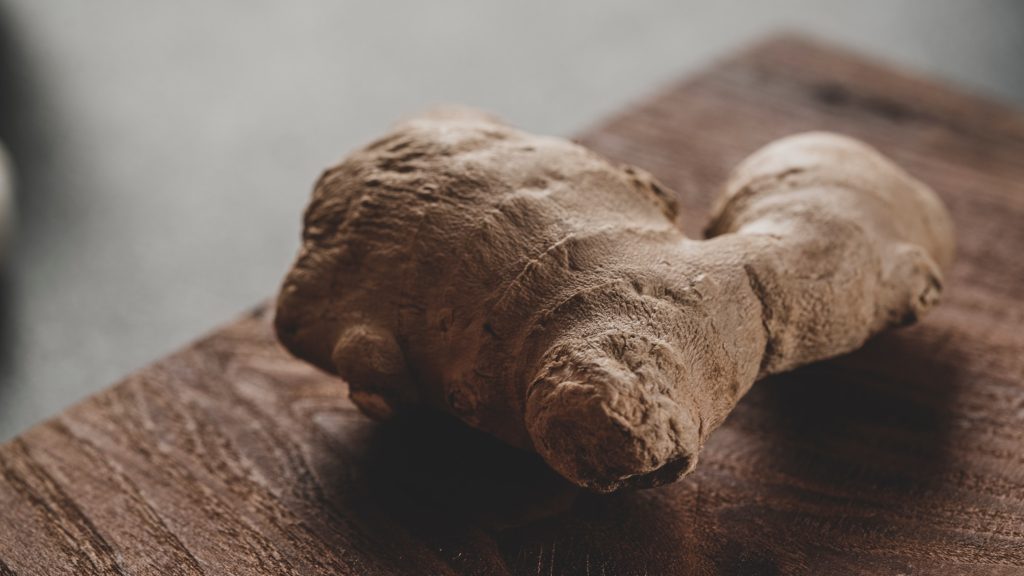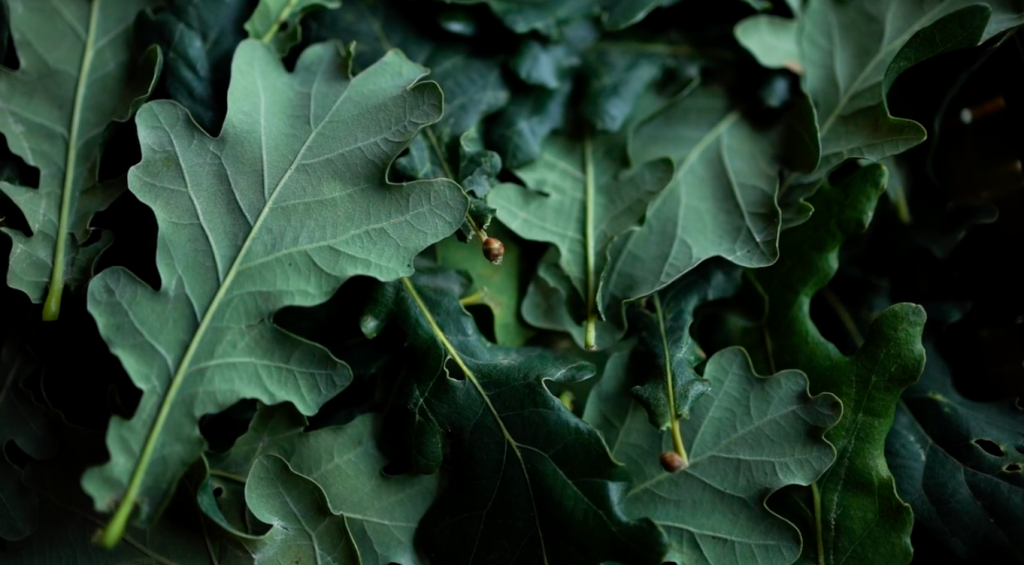It’s hard not to be enchanted by a walled garden. Here in England they are some-what legendary, helped along by the classic book and film The Secret Garden (1993). Capturing our innocence and wonder as we gaze amongst the flowers or follow hidden paths through ancient doors, even the most stoic of adults can be transformed spending an hour in these ephemeral sanctuaries.
Our Walled Garden has a twist. In keeping with our food philosophy and regenerative principles our gardening team has planted an entirely edible walled garden, with a cornucopia of edible and medicinal plants, including all the flowers adorning it! Growing abundantly are tasty flowers: rose, borage, nasturtium and calendula to name a few. Of course herbs of parsley, sage, rosemary and thyme (que Simon & Garfunkel) and familiar favourites like kale, broccoli and cauliflower growing tall in the beds.
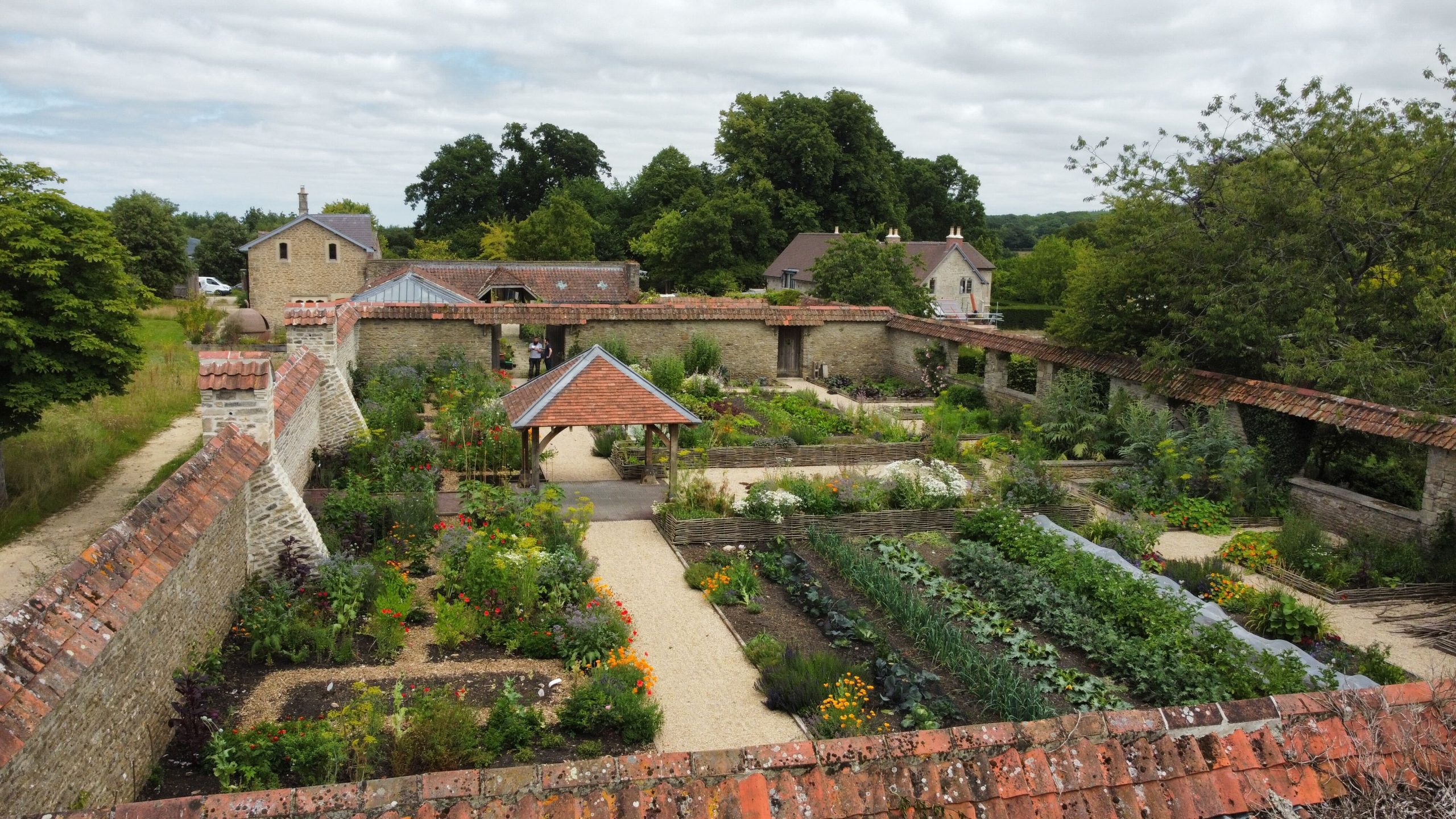
Within these walls is a garden, not only to watch the bees or sit for a peaceful meditation in, but a living opportunity to learn about the incredible world of plants through your senses. During your stay we invite you to collect a few flowers for a tea or use them on top of a salad.
To tell us more we sat down with our head ornamental gardener, Russell…
Russell, thank you for the incredible, edible Walled Garden you’ve created here at 42 Acres. Could you tell us a little more about what can be found inside and the inspiration behind the garden?
The walled garden works to a brief of it being 100% Edible. I am an ornamental gardener more at home with flowers than vegetables and fruit so I was naturally drawn to the tradition of the Potager; an ornamental garden that mixes vegetables, fruit, flowers and herbs in a creative way. I wanted to honour the amazing ‘no-dig’ produce grown by our garden team as well as create a space that would really hold people and encourage them to stop and breathe in the garden.
We therefore created a central area dedicated to herbs with woven hazel raised-beds to give height to what was quite a flat area. Radiating-out from this are productive no-dig beds, berry-beds incorporating many flowers to attract pollinators to our fruit and a series of food philosophy beds that tell stories from the 42 Acres kitchen about how they are using sustainable produce in their recipes.
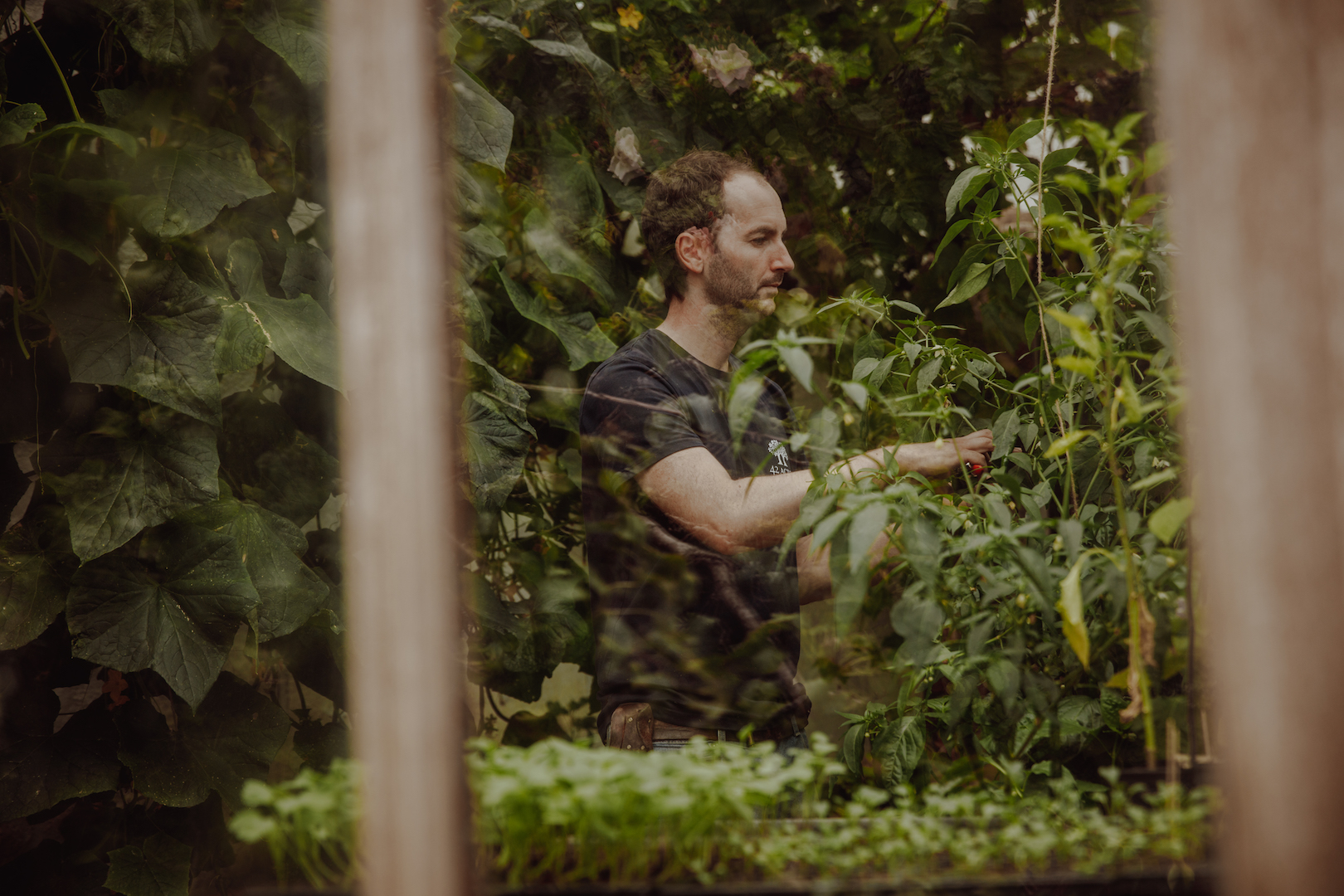
You worked alongside Landscape Architect Dominic Cole who was involved in creating the Eden Project and the Lost Gardens of Heligan when designing the Walled Garden. We’d love to know, what are your other favourite gardens?
I was lucky enough to spend a week at Gravetye Manor a few years ago and that garden has really stayed with me. It is the original Wild Garden created by William Robinson and now brilliantly gardened by head gardener Tom Coward and his team creating the most beautiful informal flower displays around the enchanting house (now a hotel). It has a uniquely shaped oval walled garden, which has a wonderful mix of vegetables, fruit and flowers, which the restaurant honours in wonderful Michelin-starred dishes.
A stone’s-throw away from Gravetye is Great Dixter; on most gardeners’ list of favourite gardens due to its enduring horticultural spirit and inspirational commitment to sustainability. A wonderful legacy left by garden-writer Christopher Lloyd and now under the expert hand of head gardener Fergus Garret. I will always return there to find new ways of combining plants and gardening in tune with nature.
I have not visited yet, but I would love to connect with the new gardens at the Knepp estate. Garden Designer Tom-Stuart Smith and horticulturist James Hitchmough have created new rewilded gardens including a walled kitchen garden where food plants are more foraged than harvested. Head Gardener Charlie Harpur offers garden safaris, which I can’t wait to attend.
Edible gardens are a great way to not only grow food and natural remedies for ourselves but other creatures too. What are your top, easy growing plants for pollinators?
Anise Hyssop (Agastache foeniculum) is a complete magnet for bees and butterflies and flowers all summer-long. It can be a bit short lived, but basal cuttings can be taken to grow new plants. Leaves have a sweet aniseed flavour and can be used raw or cooked in sweet and savoury dishes.
Nothing creates a buzz more than Oregano (Origanum vulgare); it is easy to grow your own from seed, it flowers through the summer and it will seed itself in cracks in paving and walls, bringing flower and nectar to the most unlikely places. A very useful herb in cooked dishes fresh or dried.
Borage (Borago officinalis) is an annual that is easy to grow by sowing seed in spring either in pots or straight into the ground. We have quite fertile soil in the walled garden, so it went a bit bonkers-big this year, but the bees absolutely adored it. Flowers have a wonderful cucumber taste and fresh leaves can be used to flavour drinks or chopped finely and added to salads (not whole, as they are quite bristly).
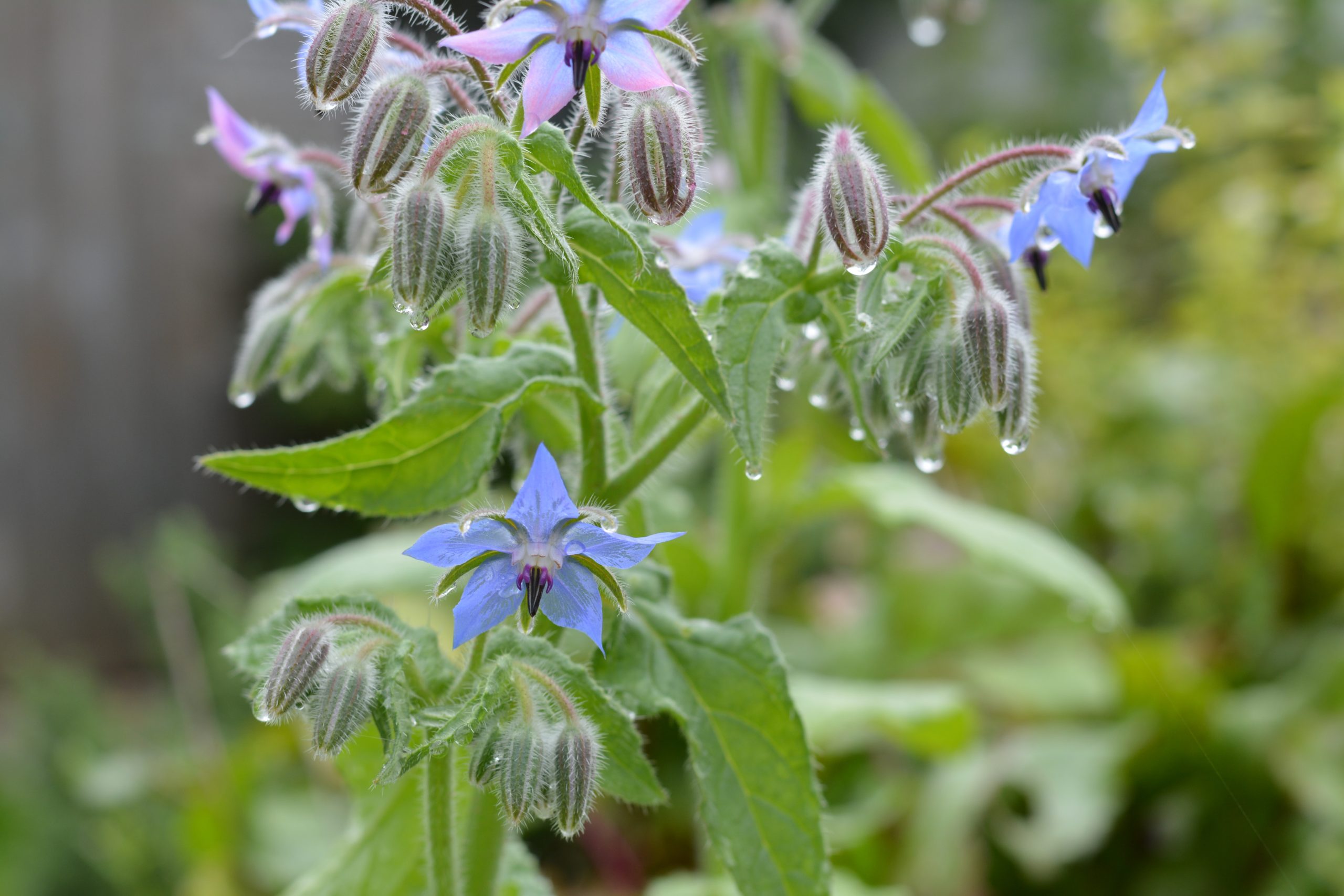
Do you have any advice for our friends at home on how they could create their own edible garden? Tips on seasonal planting or creating healthy soils for plants to thrive in.
I would create an edible garden that suits your sense of beauty and the limitations of your site as long as you are gardening with nature. If you only have a balcony it is amazing what edibles you can grow in pots and there is always room for flowers and if these are edible too.
If you have more space there is more potential to work with and nurture your soil by creating your own compost and adopting no-dig methods. How that space is used is up to you. Vegetables and fruit can be added to your flower borders or flowers can intermingle amongst your veg-beds. Diversity is key for the benefit of your gut and the nature around you and there are plenty of ways to feed and protect your plants organically. My main advice would be to buy some seeds in spring and give it a go, no matter how small the start.


